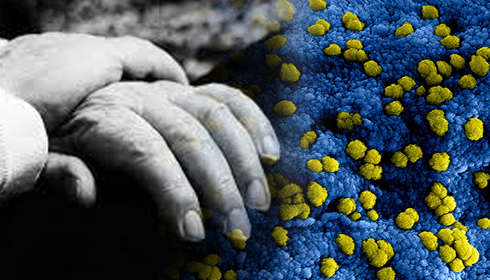
Ketamine Shows Promise in Treating Parkinson's Dyskinesia, Groundbreaking Study Reveals New Hope
A recent study published in the journal Brain has revealed groundbreaking insights into levodopa-induced dyskinesia, a common complication in Parkinson’s disease treatment, and how ketamine, an anesthetic, may offer a potential therapeutic solution. This research challenges existing notions about the role of the motor cortex in dyskinesia and sheds light on how ketamine can help restore control over movement.
Levodopa is the primary treatment for Parkinson’s disease, but over time, the brain adapts to its effects, leading to the development of dyskinesia. "Over the years, the brain of a Parkinson’s patient adapts to the levodopa treatment, which is why levodopa causes dyskinesia in the long term," explained Abhilasha Vishwanath, the study’s lead author and a postdoctoral research associate in the University of Arizona’s Department of Psychology. The study's key finding was that during dyskinetic episodes, the motor cortex—the brain region responsible for controlling movement—becomes effectively "disconnected." This discovery refutes the conventional belief that the motor cortex directly generates these involuntary movements.
"Because of the disconnect between motor cortical activity and these uncontrollable movements, there’s probably not a direct link, but rather an indirect way in which these movements are being generated," Vishwanath noted. To arrive at this conclusion, researchers recorded activity from thousands of neurons in the motor cortex. These recordings showed that neuronal firing patterns had little correlation with the dyskinetic movements, pointing toward a fundamental disconnection rather than a direct cause-and-effect relationship.
"It’s like an orchestra where the conductor goes on vacation," said Stephen Cowen, the senior author of the study and an associate professor in the Department of Psychology. "Without the motor cortex properly coordinating movement, downstream neural circuits are left to spontaneously generate these problematic movements on their own."
The study also explored the therapeutic potential of ketamine, a common anesthetic known for its ability to modulate neural activity. Researchers found that ketamine could interrupt the abnormal repetitive electrical patterns that occur during dyskinesia, potentially helping the motor cortex regain its regulatory function over movement. "Ketamine works like a one-two punch," Cowen explained. "It initially disrupts these abnormal electrical patterns occurring during dyskinesia. Then, hours or days later, ketamine triggers much slower processes that allow for changes in the connectivity and activity of brain cells over time, known as neuroplasticity, that last much longer than ketamine’s immediate effects."
Neuroplasticity enables neurons to form new connections and strengthen existing ones, which is crucial for long-term improvements in motor function. "With one dose of ketamine, beneficial effects can be seen even after a few months," Vishwanath stated. These findings align with an ongoing Phase 2 clinical trial at the University of Arizona’s Department of Neurology, where researchers are testing low-dose ketamine infusions as a potential treatment for dyskinesia in Parkinson’s patients. Preliminary results from this trial are promising, with some patients experiencing symptom relief lasting for weeks following a single treatment course.
Cowen suggested that optimizing ketamine dosages could help maximize therapeutic benefits while minimizing side effects. Furthermore, insights from this study might pave the way for entirely new treatment approaches that leverage the motor cortex’s involvement in dyskinesia. "By understanding the basic neurobiology underlying how ketamine helps these dyskinetic individuals, we might be able to better treat levodopa-induced dyskinesia in the future," Cowen said.